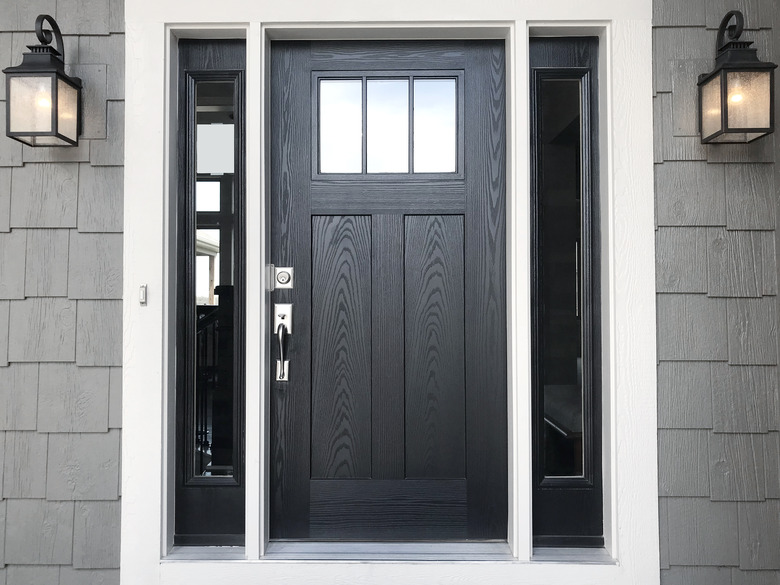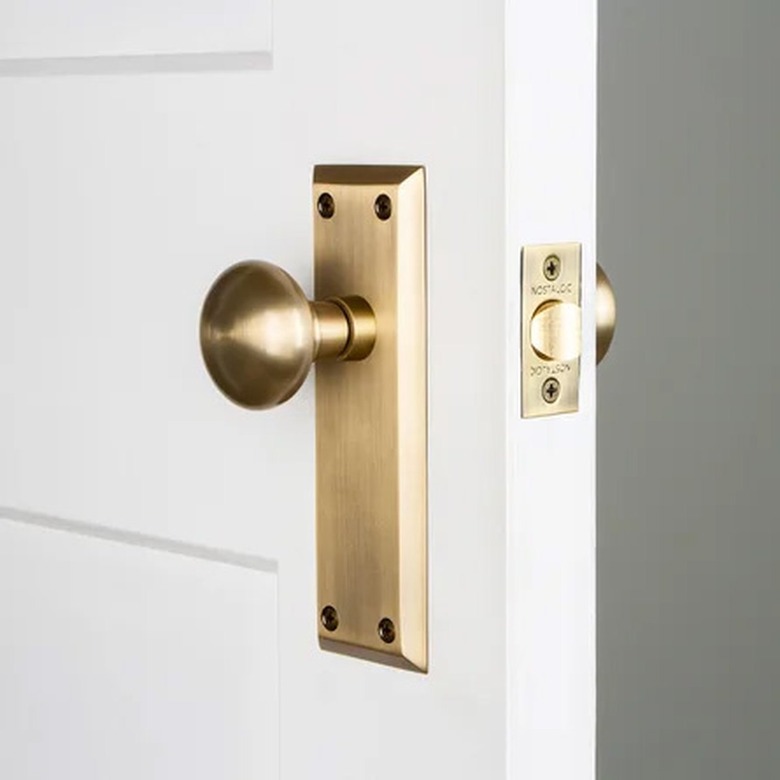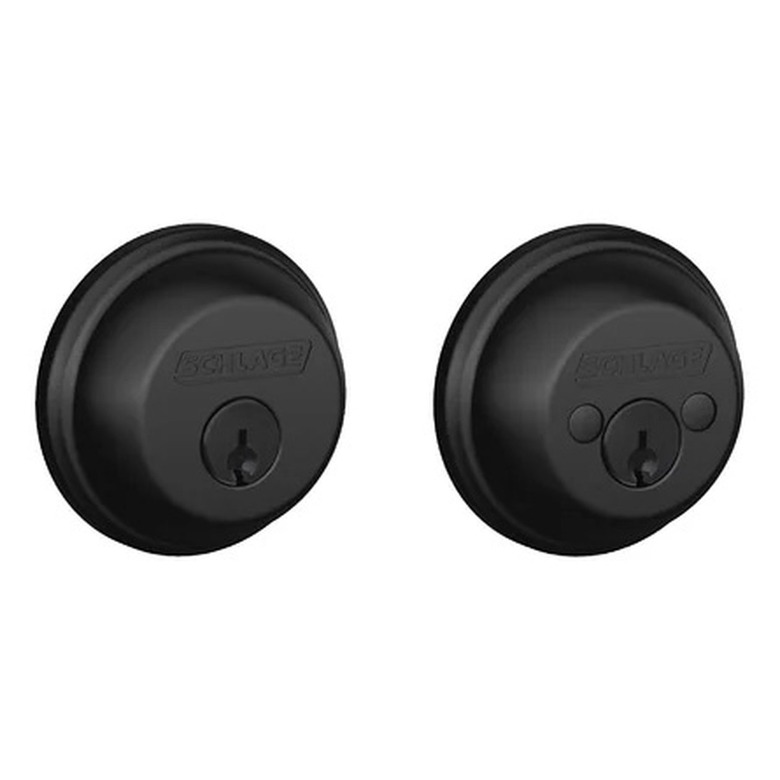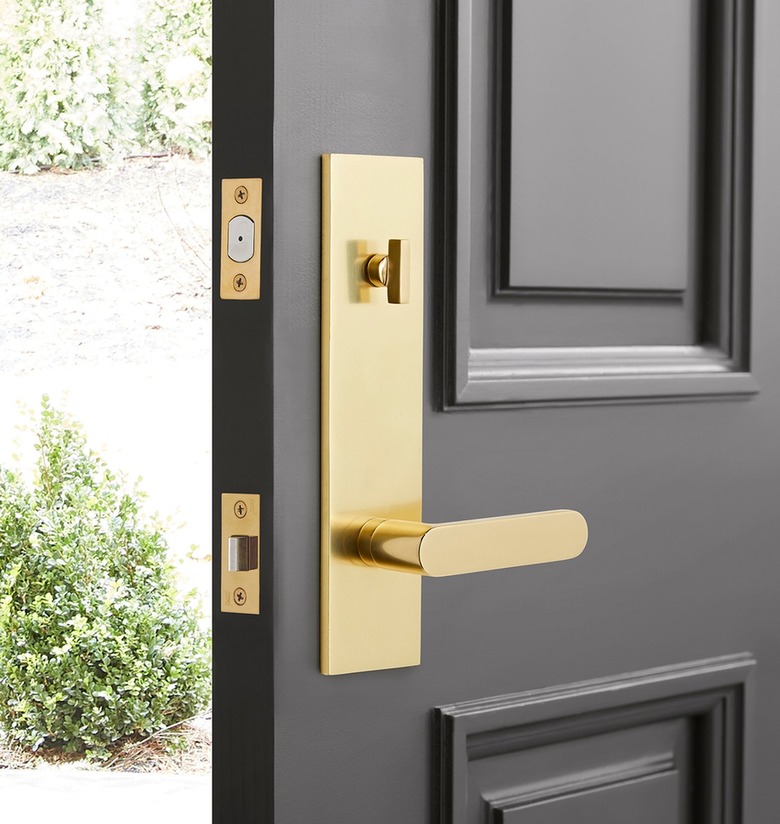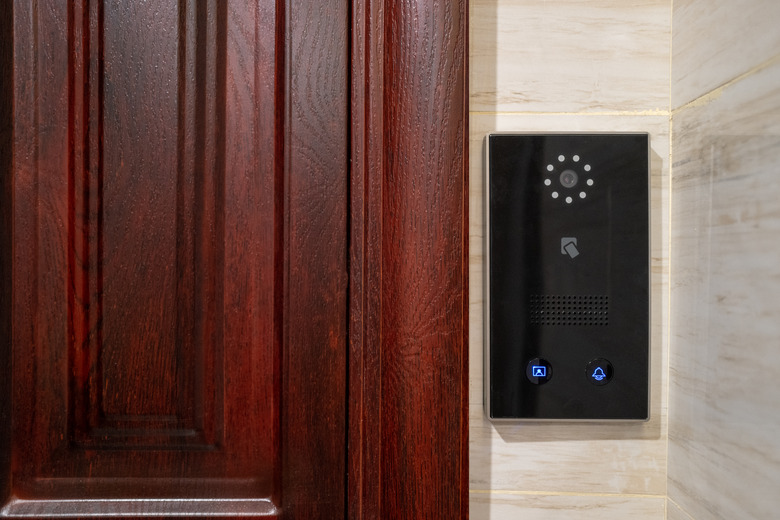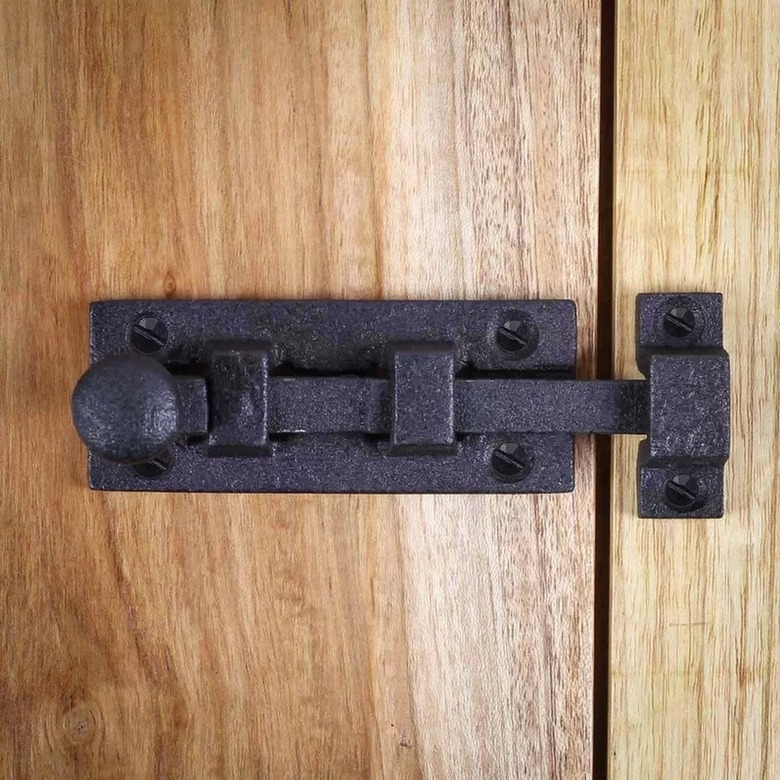The 7 Types Of Door Locks For A Stylish, Secure Front Door
We may receive a commission on purchases made from links.
No one wants to come home to find that their home has been ransacked or, worse, to have an intruder break in while they're home. Using the right exterior door hardware on your front door is the best way to fully secure your home against potential intruders. Having a secure door fitted with one lock or a combo of multiple types of locks doesn't mean homeowners need to sacrifice style for safety. Your door hardware should make a great first impression while giving you peace of mind knowing your home is secure.
1. Door Knob and Lever Hardware
1. Door Knob and Lever Hardware
Most standard exterior door knobs and levers have built-in locking mechanisms. Conveniently, you can turn the locking lever and pull them closed to lock them from the outside as you're headed out the door. You can install these simple door locks yourself with a screwdriver and some elbow grease.
While these door locks are easy to use, they are susceptible to break-ins. Knob and lever locks are vulnerable to lock picking and bumping, and they can even be broken off with a hammer. Once an intruder removes the door knob or lever, they can easily manipulate the cylinder and make their way inside. Reserve them for interior door use only or as a combo with another, more secure, door lock. These are ideal locks for interior doors, like in bathrooms and bedrooms, or when used alongside a sturdy deadbolt lock.
Door knobs and door levers are available in an array of styles and colors, and many are sold in lock sets or complete door sets that come with a matching deadbolt, door accessories, and additional entry door knobs so that you can use a single key for keyed entry in all of your exterior doors without having to hire a locksmith to rekey the doors or rekey them yourself with a Kwikset SmartKey.
2. Single-Cylinder Deadbolt Locks
2. Single-Cylinder Deadbolt Locks
The American National Standards Institute (ANSI) rates locks for their security level, with Grade 1 being the best possible rating, Grade 2 being acceptable for most residential uses, and Grade 3 being the lowest-quality lock.
Every exterior door should be fitted with a deadbolt lock, which is durable and can only be locked when the deadbolt has been turned, unlike a spring-loaded lock. When shopping for a deadbolt, aim to purchase one that's rated Grade 1 or Grade 2. Grade 1 deadbolts — such as the Schlage B60 — are virtually impossible to pick, bump, or drill, making them much more secure than a spring-loaded door knob lock, which are only rated Grade 2 at best.
Deadbolts come in a wide array of styles and finishes and have either single or double cylinders. A single-cylinder deadbolt has a keyhole on one side and a twist knob that can be used to lock the door from the inside.
3. Double-Cylinder Deadbolt Locks
3. Double-Cylinder Deadbolt Locks
Unlike single-cylinder deadbolts, double-cylinder deadbolts feature keyholes on both sides of the door. While single-cylinder deadbolts are preferable for most home locks, it is sometimes better to use a double-cylinder door lock. One such instance would be if you have several glass panes on your door or a sidelight beside the door, as intruders can easily gain entry by breaking the glass and turning the knob of a single-cylinder deadbolt.
Tip
Not all building authorities allow double-cylinder deadbolt door locks, especially on commercial doors, because they make it difficult to quickly escape during an emergency. If you do use a double-cylinder deadbolt lock, keep a key stored within easy reach of the door interior (but not reachable from the outside even if a window is broken) at all times.
4. Handleset Door Locks
4. Handleset Door Locks
A locking handleset with a deadbolt is a secure, stylish alternative to a door knob or lever and deadbolt combo. Handlesets are available in a variety of styles and finishes, including chrome, stainless steel, brass, oiled bronze, satin nickel, gold, and more. The front door handle may be integrated or separate from the matching deadbolt and may or may not feature a spring lock as well. The interior door hardware will typically feature a door knob or lever. The deadbolts may be either single- or double-cylinder models.
While many people like the security and look of handleset locks, it's important to recognize that these have the same advantages and disadvantages of deadbolts and door knob locks. That means if you buy a model with only a deadbolt, you will only be able to lock the door with a key. On the other hand, if you buy a model with a spring lock and deadbolt, you will only gain the security of a deadbolt if you actually take the time to use it. Even if you like the convenience of a standard door knob lock, you will also need to consider that these handlesets do not look as clean and streamlined as those with only a deadbolt, which is a drawback to some homeowners.
While it is easy enough for experienced DIYers to install, these handlesets are a little more complicated than a standard door knob and deadbolt locks. This is because the handle must be secured at the bottom, and the entire handle must be straight. But if you're interested in DIY, this is a great (and manageable) home improvement project to tackle. Otherwise, hire a handyman to install your door hardware for you.
5. Electronic Smart Locks
5. Electronic Smart Locks
While electric locks featuring a keypad have been around for quite some time, smart locks are a newer option that allows for keyless entry via a smartphone, tablet, or other connected device. Smart locks may connect with Bluetooth technology, which requires you to be within a certain physical range of the lock, or they may use a Wi-Fi connection, which allows access from any distance as long as the lock has an internet connection. Most smart locks also feature a keypad, a fingerprint scanner, and/or a keyhole for keyed entry. These door locks are particularly convenient for those who may have trouble manually unlocking a lock with a key.
Electronic door locks make it easy to check on whether your doors are locked or unlocked, and they allow you to lock or unlock the door from a distance — even across the world — with a Wi-Fi device. You can even set up a schedule so your doors will automatically lock before you go to bed. With a Wi-Fi-connected smart lock, you could easily let your pet sitter in the front door to walk the dog while you're at work, for example. Some systems can even link with other smart home systems so you can view visitors with your security camera before opening the door. On the downside, some hackers have been able to hack these devices, severely compromising home safety.
6. Night Latch Door Hardware
6. Night Latch Door Hardware
Night latches, also called rim locks or Yale locks, are locks secured to the interior surface of a door. Night latches are not considered as secure as a Grade 1 or Grade 2 deadbolt, which is why they should never be relied on as a primary door lock. But door latches are considered "jimmyproof," meaning they cannot be pried out of a door. When they are combined with other locks, latches can offer an extra level of home security. A deadbolt and latch combo is a great example. Because of how they are mounted, they're also a good option for securing double doors, which are particularly at risk of getting kicked in.
Compared to other types of door hardware, night latches have fewer design options on the market. Some homeowners dislike the appearance of door hardware installed on the surface of the door, so finding a lock you love will take some extra sleuthing.
References
- Acme Locksmith: What is Lock Bumping & How to Stop It
- Home Stratosphere: What Are the 10 Different Types of Door Locks? Find Out Here
- United Locksmith: 6 Types Of Door Locks Commonly Used On Residential Properties
- Homenish: 10 Types of Door Locks and How They Work (with Pictures)
- ELawtalk: 16 Different Types of Exterior Door Locks
